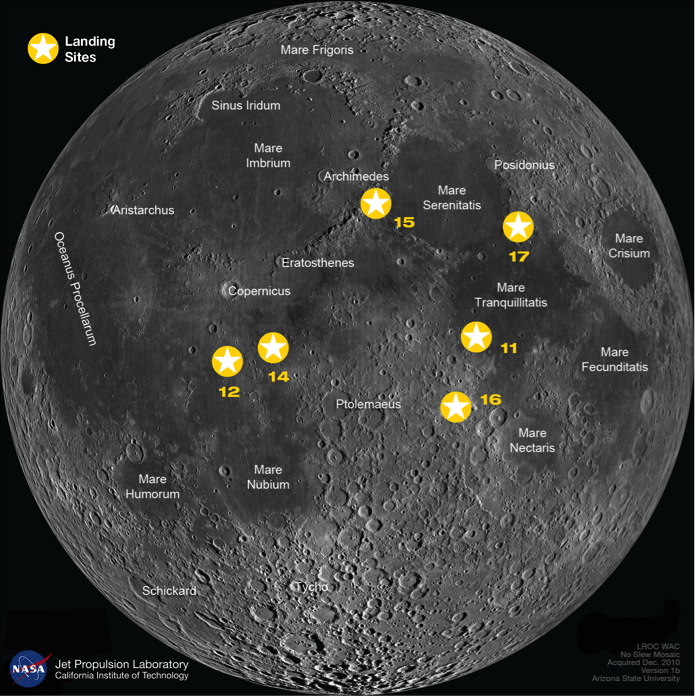By Jane Houston Jones and Jessica Stoller-Conrad![]()
NASA JPL
This year’s International Observe the Moon Night is on Oct. 20. Look for astronomy clubs and science centers in your area inviting you to view the Moon at their star parties that evening!
On Oct. 20, the 11-day-old waxing gibbous Moon will rise in the late afternoon and set before dawn. Sunlight will reveal most of the lunar surface and the Moon will be visible all night long. You can observe the Moon’s features whether you’re observing with the unaided eye, through binoculars or through a telescope.
Here are a few of the Moon’s features you might spot on the evening of October 20:
Sinus Iridum—Latin for “Bay of Rainbows”—is the little half circle visible on the western side of the Moon near the lunar terminator—the line between light and dark. Another feature, the Jura Mountains, ring the Moon’s western edge. You can see them catch the morning Sun.
Just south of the Sinus Iridum you can see a large, flat plain called the Mare Imbrium. This feature is called a mare—Latin for “sea”—because early astronomers mistook it for a sea on Moon’s surface. Because the Moon will be approaching full, the large craters Copernicus and Tycho will also take center stage.
Copernicus is 58 miles (93 kilometers) across. Although its impact crater rays—seen as lines leading out from the crater—will be much more visible at Full Moon, you will still be able to see them on October 20. Tycho, on the other hand, lies in a field of craters near the southern edge of the visible surface of the Moon. At 53 miles (85 kilometers) across, it’s a little smaller than Copernicus. However, its massive ray system spans more than 932 miles (1500 kilometers)!
And if you’re very observant on the 20th, you’ll be able to check off all six of the Apollo lunar landing site locations, too!
In addition to the Moon, we’ll be able to observe two meteor showers this month: the Orionids and the Southern Taurids. Although both will have low rates of meteors, they’ll be visible in the same part of the sky.
The Orionids peak on Oct. 21, but they are active from Oct. 16 to Oct. 30. Start looking at about 10 p.m. and you can continue to look until 5 a.m. With the bright moonlight you may see only five to 10 swift and faint Orionids per hour.
If you see a slow, bright meteor, that’s from the Taurid meteor shower. The Taurids radiate from the nearby constellation Taurus, the Bull. Taurids are active from Sept. 10 through Nov. 20, so you may see both a slow Taurid and a fast Orionid piercing your sky this month. You’ll be lucky to see five Taurids per hour on the peak night of Oct. 10.
You can also still catch the great lineup of bright planets in October, with Jupiter, Saturn and Mars lining up with the Moon again this month. And early birds can even catch Venus just before dawn!
You can find out more about International Observe the Moon Night at https://moon.nasa.gov/observe.
Caption: This image shows some of the features you might see if you closely observe the Moon. The stars represent the six Apollo landing sites on the Moon. Credit: NASA/GSFC/Arizona State University (modified by NASA/JPL-Caltech)
This article is distributed by NASA Space Place. With articles, activities and games NASA Space Place encourages everyone to get excited about science and technology. Visit spaceplace.nasa.gov to explore space and Earth science!

